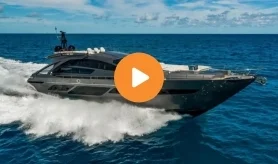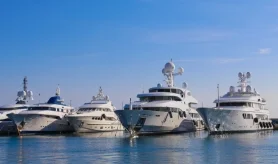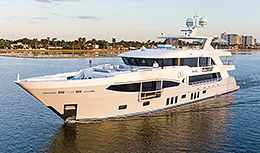- Alaskan Yachts
- Azimut Yachts
- Back Cove Yachts
- Beneteau Yachts
- Benetti Superyachts
- Bertram Yachts
- Boston Whaler
- Broward Yachts
- Buddy Davis Sportfish
- Burger Yachts
- Cabo Yachts
- Catamarans
- Carver Motoryachts
- Center Console
- Chris-Craft Yachts
- Cruisers Yachts
- DeFever Trawlers
- Dufour Sailboats
- Fairline Yachts
- Feadship Yachts
- Ferretti Yachts
- Formula Yachts
- Fountaine Pajot Cats
- Grady-White
- Grand Banks Trawlers
- Hargrave Yachts
- Hatteras Yachts
- Hinckley Picnic Boats
- Horizon Yachts
- Hydra-Sports
- Intrepid Boats
- Jarrett Bay Sportfish
- Jeanneau Yachts
- Kadey-Krogen Trawlers
- Lazzara Yachts
- Lekker Boats
- Luhrs Sportfish
- Marlow Yachts
- Maritimo Yachts
- Marquis Yachts
- McKinna Motoryachts
- Meridian Yachts
- Midnight Express
- MJM Yachts
- Mochi Craft
- Neptunus Motoryachts
- Nordhavn Trawlers
- Nordic Tugs
- Numarine Yachts
- Ocean Alexander Yachts
- Offshore Yachts
- Outer Reef
- Oyster Sailing Yachts
- Pacific Mariner Yachts
- Palmer Johnson Yachts
2015 Beneteau Oceanis 60 Test Video
January 12, 2017 3:30 pm
Join us as BoatTest.com takes a test sail of the 2015 Beneteau Oceanis 60 sailboat:
The following opinions are solely those of BoatTest.com and its test captain.
Hi, Capt. Steve from BoatTest.com, and today I’m going to conduct a full sea trial of the Beneteau Oceanis 60.
This is a new launch from Beneteau that recently made its world debut, and in our opinion, she’s a yacht that is as comfortable crossing oceans as she is sitting at anchor. Let’s take a look.
We’ll start our tour at the generous cockpit deck. This will undoubtedly be the most popular gathering area while the Oceanis 60 is underway as there are places to relax both ahead and above the helms. The bimini and dodger are optional and made at the factory in France, delivered ready to go. There’s comfortable 4-inch thick seat cushions, the teak table has insulated storage – it can be optioned out for a refrigerated table, but with it being so exposed to the elements, we’d stick with this version.
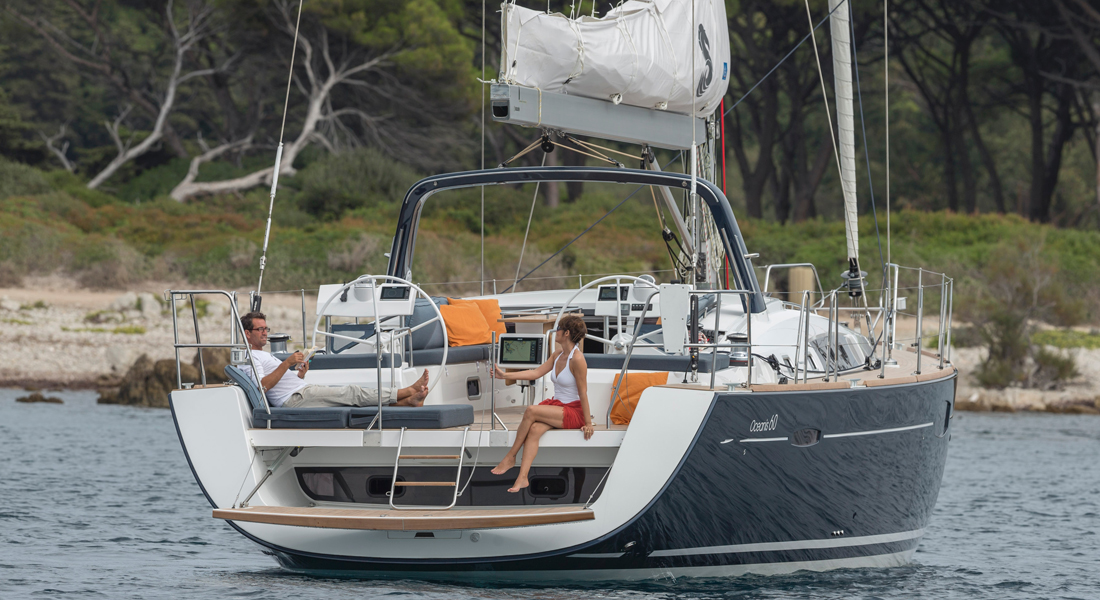
With the aft platform lowered, we extend the working area of the deck 2 feet 2 inches by 8 feet 8 inches as well as allowing access to the tender storage just ahead and create a private beach. Moving to the bow the side decks measure 1 foot 7 inches, and notice Beneteau worked with fiberglass treated with nonskid; teak decking is an available option.
Her Lewmar Delta plow anchor is supported by a stainless roller and a bobstay underneath adds strength for when the spinnaker is flying.
This hatch leads to the crew quarters, and quite frankly without crew, this is a great place to stash the kids. It features two bunks, head and sink. At the dual helms, Beneteau went with B&G Electronics and beautiful 36-inch carbon composite wheels. In the center will be a 19-inch glass deck display repeating the information from the smaller screens at the helms, and all their touchscreens.
A throttle is to the starboard helm next to the binnacle compass and then the thruster controls. There’s storage under the helm seats, and they are held in the open position with gas struts. Just behind the starboard helm seat is a compartment for storing the life raft.
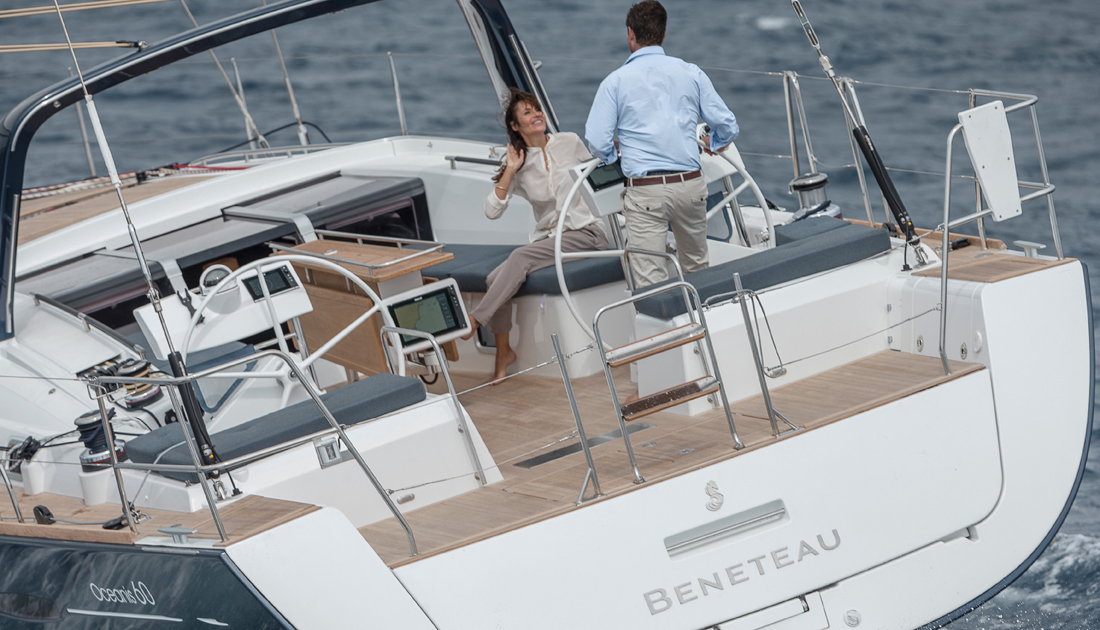
Now down below to starboard we have our protected navigation station complete with nav display and chart storage underneath. The main electrical panel is in the port guest stateroom, battery switches are just to the sides of the stairs. We can lift the stairs and we have access to the iron mainsail. In this case 140 horsepower VW engine. The standard is 130 horsepower Volvo engine.
There are two lights in this compartment, through hull fittings are just ahead of the engine, dual alternators charge the batteries, opening panels to the sides allow additional access to the engine, side panels further forward allow access to both sides of the generator just behind the main engine.
Now let’s focus on the deck hardware. Fully forward we’ve got an electric roller furling jib and a manual roller staysail. The main mast is a Seldon rig with a Seldon boom vang, certainly one of the better names in the industry. It’s a three-spreader fractional rig, and Beneteau uses all Harkin rigs for the winches in the 70 millimeter blocks.
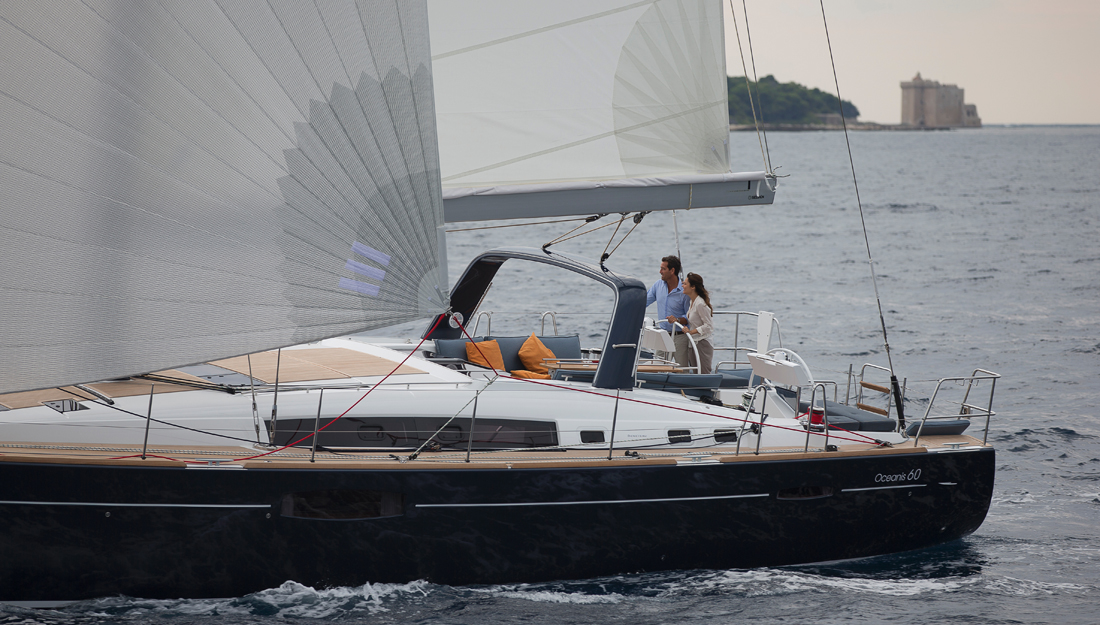
It comes complete with rigging and spreader lights. With all sheets color coded and running cleanly back to the cockpit, not only are tripping hazards eliminated but it’s a very easy boat to sail short-handed. Let’s take a look at how they’re arranged.
It starts to port with the main halyard, the topping lift, the mainsheet outhaul and the boom vang, and all are easily locked in a position. To the starboard side we have the two mains – in and out, the blue staysail halyard and the red spinnaker halyard.
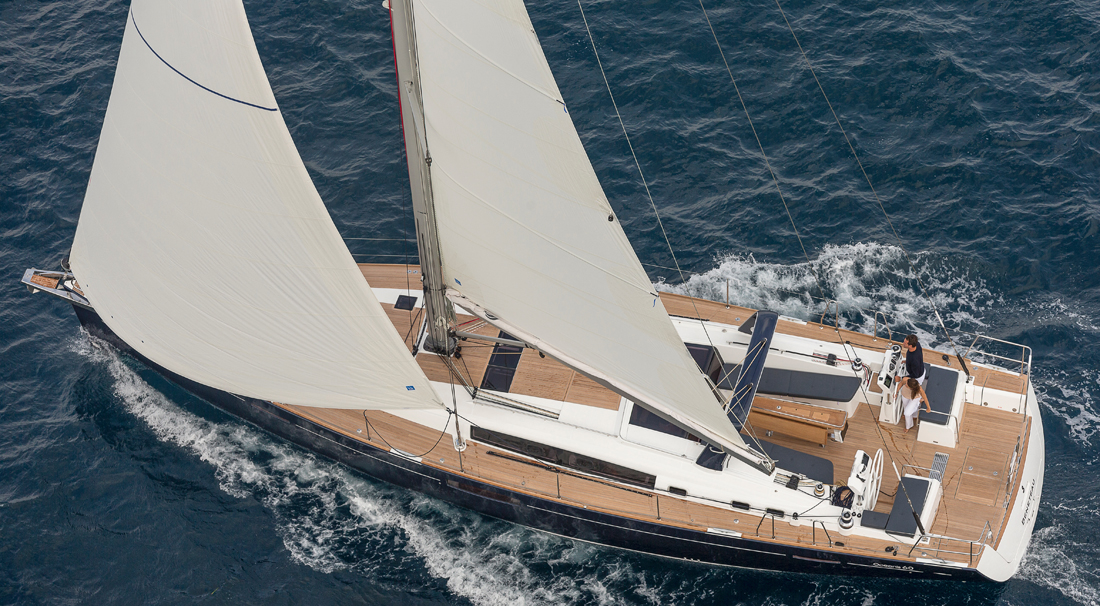
At the side decks are the adjustable chip cards on tracks, all controllable from the cockpit. Move it forward and the top of the jib closes for operation in light air. In, heavy air move it back and the top of the sail opens which brings us back to the cockpit. All winches here are electric two speed and self-tailing. The halyard and sail handling winches are 46s, the jib handling winches are 70s.
Even sailing the OC 60 short-handed in 20 knots of Florida breeze and seas proved to be very manageable. Upward, performance and tracking were very good while you don’t need to stay in the groove to see the boat’s true performance ability. When reaching the boat proves very fast at 11 knots and occasional 13 with the wind at 125 degrees apparent wind angle. Upwind and downwind the boat proved to be very dry and handled the 4-6 foot seas without any issues. There’s a big rudder under the hull, so she’s very responsive even at low speeds.
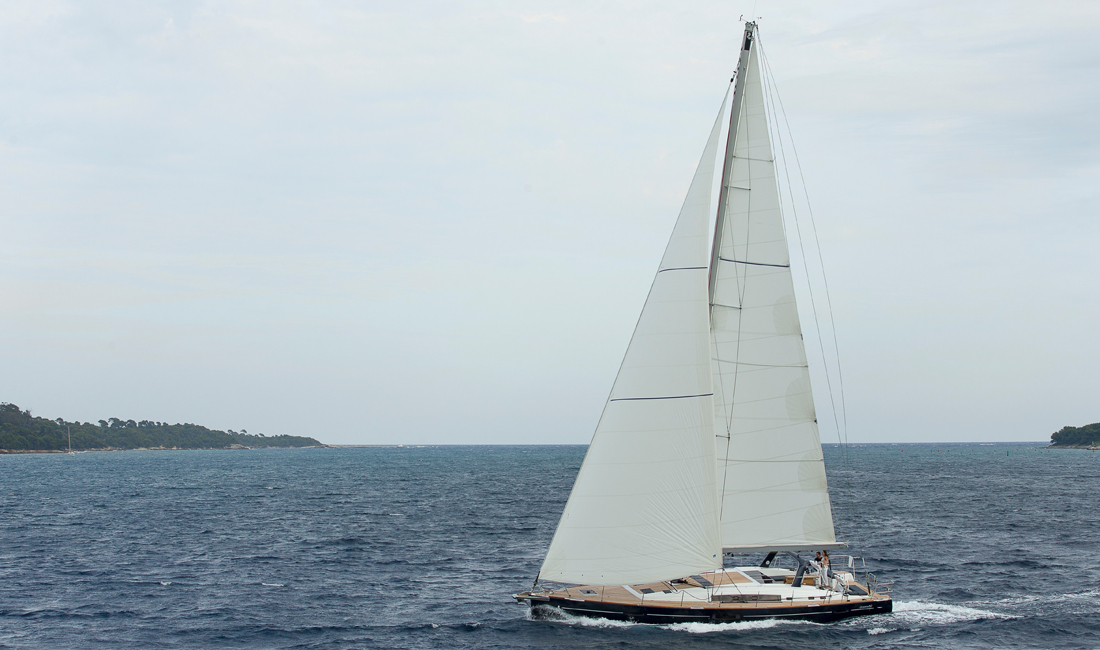
Finally when making our way back into the harbor under power, we found her to be a surprisingly easy boat to manage in close quarters. She’s fitted with a standard bow thruster which had more of an effect of pivoting about than moving the bow. This is an important point, so make sure you have enough room to swing when using the thruster. This also means that when docking, the thruster could be used as much to position the stern as it can to move the bow and just use small pulses to do so, it’s quite effective.
Overall, this is an impressive boat that had a remarkable level of comfort along with the ease of handling that we’ve come to expect from the brand. And that’s our test of the Beneteau Oceanis 60. For BoatTest.com, I’m Capt. Steve.
